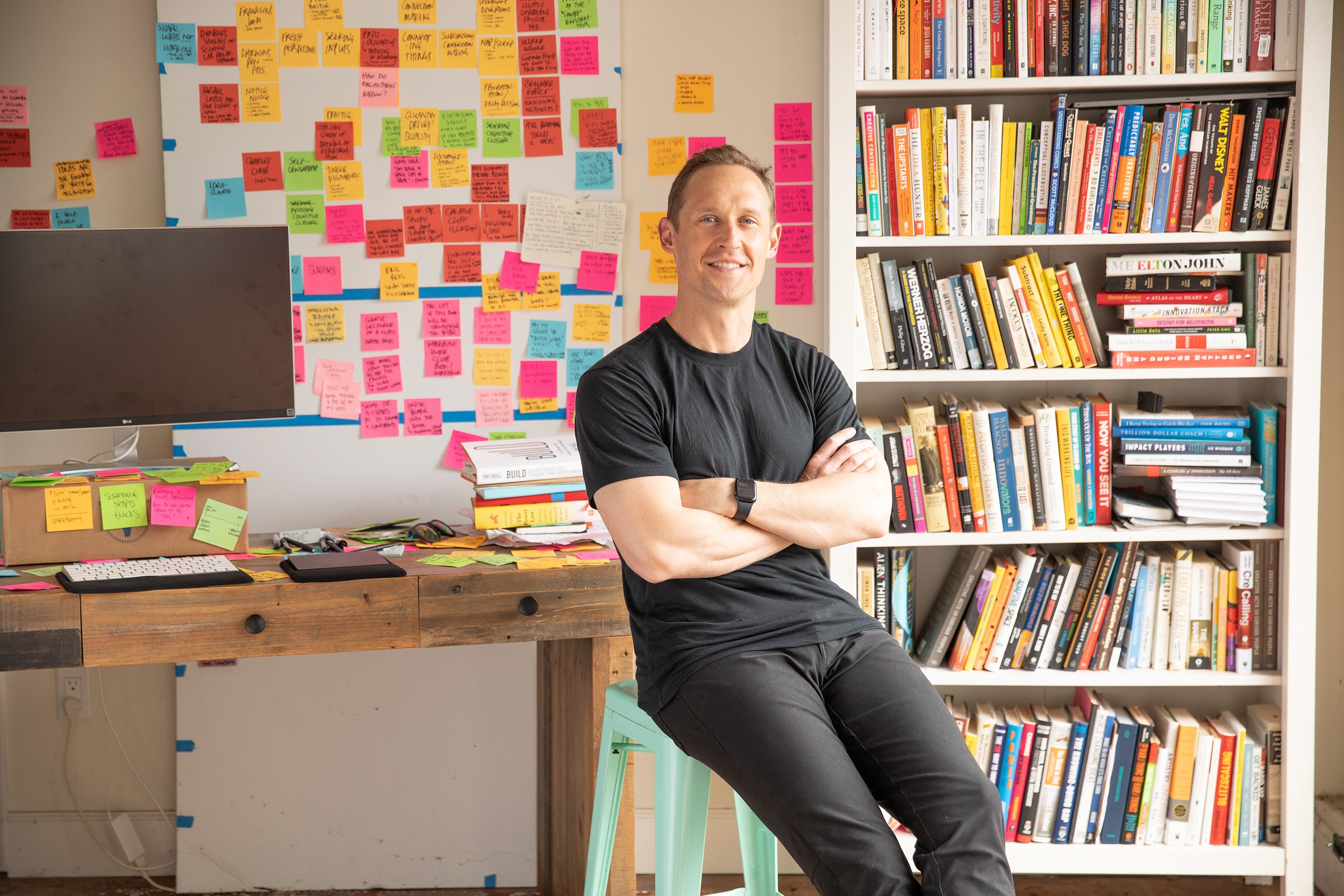
Methods of the Masters
A blog on the art & science of creative action.
Seek Inspiration to Spark Innovation
Rather than waiting around for lightning to strike, take a more proactive approach. You can provoke your own imagination. One of the most effective, powerful, and fun tools we have created for such self-provocation missions is what we call “Analogous Exploration.”
Question the Question
All too often, the stated “problem” keeps a team from innovation: the problem is the problem. Being willing to question the premise, rather than accept it blindly, is a critical practice for creative health.
Divert Your Attention
We've all been there: struggling against some challenge, banging our head against the wall. Even Albert Einstein. How he broke through teaches us something fundamental about creativity.
Collect and Connect
One of my all-time favorite origin stories is a case study in innovation: a collision between boredom, R&D, ineffective technology and a frustrated choirboy.
Work Different
It is profoundly uncomfortable to choose to work differently. But sometimes, the best way forward is to allow yourself to retreat. Work different.
Do This Before Bed
LinkedIn Founder Reid Hoffman and John Steinbeck might be wildly different characters, yet when it comes to sparking creativity, they both employ an unexpected hack.
Don’t Multi-Task
Stanford Professor Clifford Nass studied hundreds of students to explore what distinguished self-proclaimed “multitaskers” from the rest of us. His conclusions, and their implications, won’t surprise you.
Keep A Bug List
Great leaders know that every innovation begins with a problem. Instead of telling their people to “bring me solutions,” they encourage folks to be on the lookout for problems worth solving.
Push Past Obvious
Paraphrasing Google X CEO Astro Teller, sparking group innovation can be as simple asking a team to “Gimme five.” Those two words contain a remarkable depth of wisdom.
Get Unstuck
This guest post comes from Ozan Varol, one of my favorite rocket scientists. It’s excerpted from his new book, “Awaken Your Genius,” which is sure to be on my year-end best books list!
Gather Conceptual Legos
Wildly inventive individuals have a habit of gathering conceptual pieces before they know exactly what they’re going to do with them. The more legos you collect, the more ideas you can make.
Practice Empathy
If you find a problem that matters, you’re well on your way to a desirable innovation. How do you do that? Practice empathy.
Don’t Quit Diverging
Most folks want to stop diverging as quickly as possible. As soon as a reasonably good idea comes up, there's a collective sigh of relief which says, "Whew! We did it! Mission accomplished!" …
Be Irresponsible
We all want to steward organizational resources responsibly. But sometimes, the problems we face aren’t clear, and neither are the solutions. In such cases, good stewardship requires divergent thinking, which often feels irresponsible.
Appreciate Small Breakthroughs
Most breakthroughs sneak up on us, and can easily recede from our memories. Appreciating the small breakthroughs is an important step in rewiring some of our default ways of working.
Give Permission For Working Differently
Sometimes, the best way forward in solving a problem is to allow yourself to retreat. Operative word here being, “allow.” It is profoundly uncomfortable to choose to work differently, when it doesn’t really look like work.
Singletask
Stanford Professor Clifford Nass studied hundreds of students, to explore what distinguished self-proclaimed “multitaskers” from the rest of us. His conclusions, and their implications, won’t surprise you.
Roast Your Problem
Some problems can be hard to see from different perspectives. William Hardaway, a design leader in higher education recommends taking a light-hearted approach to exposing unexplored angles.
Focus On One Killer Feature
In the last 12 years, I’ve helped some 10,000 new innovators in training come up with new ideas and quickly assess if any are worth pursuing. I have never seen a new product with too few features.



















